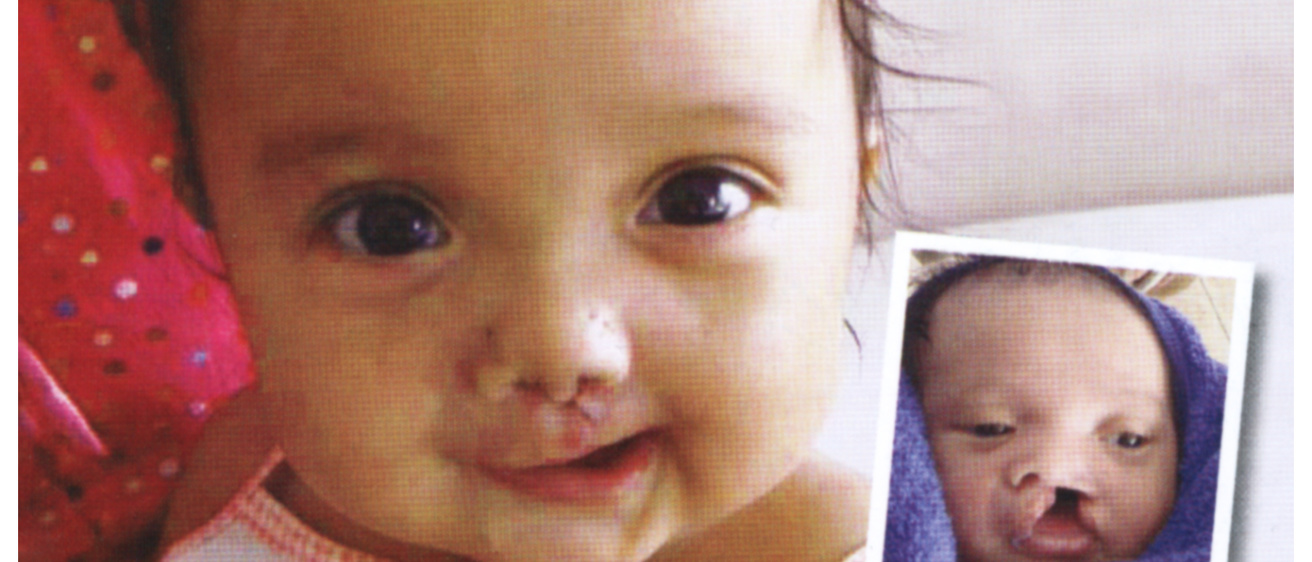Clinical Care
Educational module – clefting
Cleft lip and or palate is one of the major birth defect affecting 1 in every 1,000 birth in the USA. These orofacial clefts happen early during pregnancy when the lip and or the palate do not join completely. Craniofacial research is aimed at understanding the causes of and the risk factors for orofacial clefts which would ultimately contribute to the development of therapeutic strategies for babies.
Definition
“Cleft” means “opening” or “fissure”. In the context of the face, it means an opening in the lip or in the roof of the mouth, also known as the palate.
The lip and the palate are formed during the first three months of pregnancy. Therefore, cleft lip and cleft palate are caused by parts of the lip and parts of the palate not fully growing and fusing properly. Because the defect happens during pregnancy, the child will present with the defect at birth. Cleft lip and palate is the most common birth defect in the United States occurring in 1 of 1,000 babies born.
The child can present with different clinical manifestations:
- A cleft lip only
- A cleft palate only
- A cleft lip with a cleft palate
If orofacial cleft is the only defect present in the patient, it is considered a non-syndromic cleft. About 70% of all patients presenting with cleft fall into the non-syndromic category.
Sometimes the patient present other defects in other parts of the body in addition to the orofacial cleft. It belongs then to a syndrome. About 30% of all clefts are syndromic clefts and include over 500 syndromes that have clefts as part of their clinical manifestations.
Cause and risk factors
There are many causes of cleft lip and palate. Many of the direct causes remain unknown.
- genetics: problems with genes passed down from one or both parents can increase the risk for clefting. Genetic abnormalities (genetic mutations) in particular genes can be the cause of some syndromic form of clefting (ex: TP63 and EEC, IRF6 and VWS).
- environment: smoking and other environmental exposure can increase the risk for clefting.
Symptoms
The cleft lip can be a small notch in the lip to a complete split all away to the base of the nose. It can be unilateral of bilateral.
The cleft palate can be partial or go the full length of the palate.
Other symptoms include:
- feeding problems leading to failure to gain weight
- ear fluid build up and infection
- dental abnormalities
- speech difficulties
Treatment
Because of the complexity of the defect, it is important to have the patient being followed by a team of experts. Several hospitals around the country have a cleft clinic.
o Surgery:
- the lip is often closed when the child is 6-9 months old. Additional surgery may be needed later in life for cosmesis
- the palate is usually closed around 12 months of age.
o Speech therapy: the child may need help for proper speech
o Audiology: an audiologist will assess hearing and recommend treatment if necessary
o Psychology: developmental specialists will work with the patient to adjust behavioral or learning issues caused by the cleft.
o Orthodontics: this care is very frequent as teeth need to be repositioned or straighten
Check near by your location for a specialized cleft clinic and cleft palate guide:
http://www.uichildrens.org/cleftpalate/
http://www.uichildrens.org/cleft-palate-faqs/
https://uichildrens.org/health-library/cleft-palate-clinic-visit
https://uichildrens.org/health-library/cleft-palate-surgical-procedures
http://www.uichildrens.org/cleft-palate/surgical-treatment/
http://www.uichildrens.org/cleft-palate/team-members/
https://uichildrens.org/health-library/cleft-palate-craniofacial-services-glossary
Prognosis, quality of life, and support groups
Most babies will heal without problems. How the child will look after treatment will depend on the severity of the cleft.
A few support groups are available:
Cleft palate foundation http://www.cleftline.org/
Cleft lip and palate foundation of smiles https://rarediseases.org/organizations/cleft-lip-and-palate-foundation-of-smiles/
